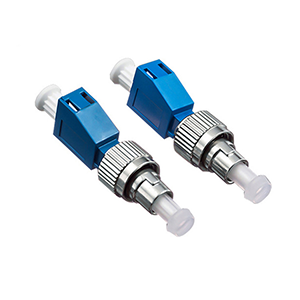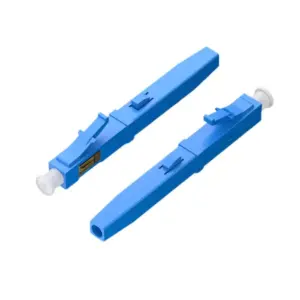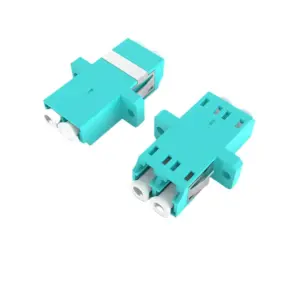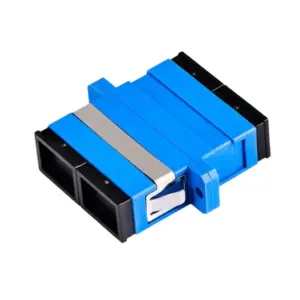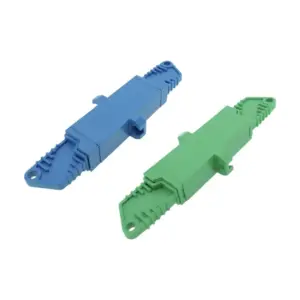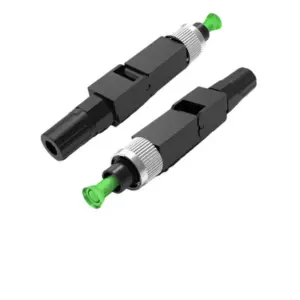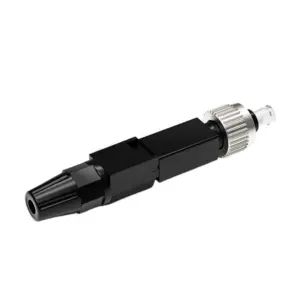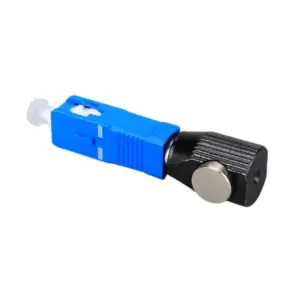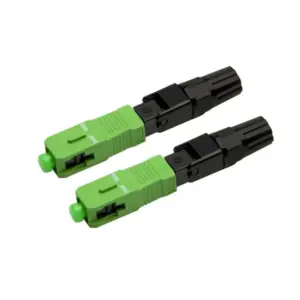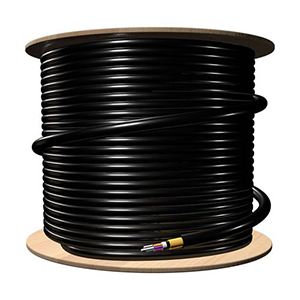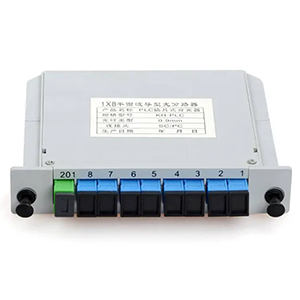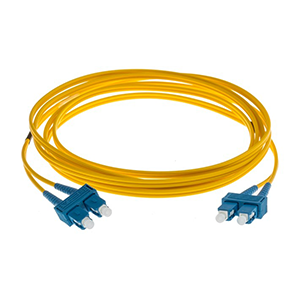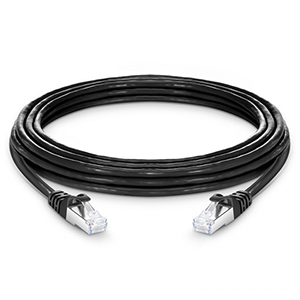Hi everyone! Today I want to talk to you about fiber optic connectors. These small devices play an important role in our daily communications and networking world. Especially UPC fiber optic connectors and APC fiber optic connectors, their differences and applicable scenarios often make people confused when choosing. In this article, I will explain to you the characteristics, advantages and applications of UPC fiber optic connectors and APC fiber optic connectors in different fields. Let’s learn about the wonders of these connectors so you can make an informed choice in your fiber optic network.
Features and advantages of UPC fiber optic connectors
UPC (Ultra Physical Contact) optical fiber connector is a commonly used optical fiber connector with the following characteristics and advantages:
Definition and working principle:
The UPC fiber optic connector is a carefully designed fiber optic connector whose connection end faces are precision polished to achieve very close to perfect physical contact. It uses spherical or conical polished end faces to achieve extremely high optical coupling efficiency between optical fibers.
Design features and advantages:
a. Excellent insertion loss: Due to the precise polishing of UPC connectors, excellent insertion loss performance can be achieved. The physical contact between connectors is very tight, minimizing reflection and loss of optical signals.
b. Lower return loss: UPC connectors can achieve lower return loss by reducing the reflection of optical signals. This is important for applications that require high-quality signal transmission, such as fiber optic communications and data transmission.
c. High reliability and stability: The design of UPC connector ensures stable physical contact, giving it excellent reliability and stability. They can maintain stable connection performance for a long time and reduce the occurrence of connection failures.
d. Wide applicability: UPC connectors are compatible with common fiber optic interface types, such as SC, LC, FC, etc., so they can be widely used in various fiber optic communication and data transmission systems.
e. Easy to use: The UPC connector adopts a simple push-pull design, which is easy to install and connect. They often come with standardized color codes, making the connection process easier and more reliable.
Applicable application scenarios:
Because UPC connectors have excellent insertion loss and return loss performance, as well as high reliability and stability, they are more suitable in many application scenarios, including but not limited to:
a. Optical fiber communication network: UPC connectors are commonly used in optical fiber jumpers, optical fiber distribution racks, optical fiber terminal boxes and other connecting components in optical fiber communication networks.
b. Data center: UPC connectors can be used for optical fiber interconnection within the data center, such as connections between servers, storage device connections, etc., to achieve high-speed, low-loss data transmission.
c. Television transmission and broadcasting systems: UPC connectors are widely used for optical fiber connections in television transmission and broadcasting systems to ensure high-quality audio and video signal transmission.
d. Test and measurement equipment: UPC connectors are often used in fiber optic test and measurement equipment to provide accurate signal transmission and measurement results.
Features and advantages of APC fiber optic connector
APC (Angled Physical Contact) optical fiber connector is a commonly used optical fiber connector with the following characteristics and advantages:
Definition and working principle:
APC fiber optic connector is a fiber optic connector with an inclined contact surface. The connection end face is tilted and polished to form a small angle bevel, usually 8 degrees. This angled contact surface reduces reflections and causes the optical signal to leave the connector at a larger angle.
Design features and advantages:
a. Low reflection loss: The inclined contact surface of the APC connector causes the light to leave the connector at a larger angle, thereby reducing the reflection of the optical signal. This can effectively reduce reflection loss and improve the signal quality of the connection.
b. High return loss: By reducing reflections, APC connectors can achieve higher return loss. This is important for applications requiring extremely low return loss, such as fiber optic sensors and fiber optic measurement systems.
c. High reliability and stability: The design of the APC connector ensures stable physical contact, making it highly reliable and stable. They can maintain stable connection performance for a long time and reduce the occurrence of connection failures.
d. Wide applicability: APC connectors are compatible with common fiber optic interface types, such as SC, LC, FC, etc., so they can be widely used in various fiber optic communication and data transmission systems.
e. Easy to use: APC connector adopts a simple push-pull design, which is easy to install and connect. They often come with standardized color codes, making the connection process easier and more reliable.
Applicable application scenarios:
Because the APC connector has low reflection loss, high return loss, and high reliability and stability, it is more suitable in many application scenarios, including but not limited to:
a. Optical fiber communication network: APC connectors are often used for long-distance transmission and high-demand applications in optical fiber communication networks, such as fiber jumpers, fiber distribution racks, fiber terminal boxes and other connecting components.
b. Fiber optic sensors and measurement systems: APC connectors are used in fiber optic sensors and measurement systems and can provide lower reflection and higher return loss to ensure accurate measurement results.
c. Active optical fiber devices: APC connectors are often used to connect with active optical fiber devices (such as optical amplifiers, optical switches, etc.) to ensure high-quality signal transmission and reliability.
d. Passive optical network equipment: APC connectors are widely used in passive optical network equipment, such as optical modules, optical splitters, etc., to achieve high-performance optical signal transmission.
So APC optical fiber connector achieves low reflection loss and high return loss connection through inclined contact surface and excellent performance characteristics, and is suitable for a variety of optical fiber communications and data that require high signal quality and return loss. Transmission application scenarios.
Comparison of the differences between UPC connectors and APC connectors
There are key differences between UPC fiber optic connectors and APC fiber optic connectors, mainly in end face shape and reflection loss:
End face shape:
- UPC connector: UPC connector adopts spherical or conical polished end face, which enables very close to perfect physical contact between optical fibers.
- APC connector: The APC connector adopts a slanted polished end face, forming a small angle bevel (usually 8 degrees), allowing light to leave the connector at a larger angle.
Reflection loss:
- UPC connector: Due to the design of the end face shape, the reflection loss generated by the UPC connector is slightly higher than that of the APC connector, generally in the range of -50 to -55 dB.
- APC connector: Due to the inclined design of the end face, the APC connector can achieve very low reflection loss, usually above -60 dB, and can even reach around -70 dB.
These differences have the following impact on fiber transmission performance and connection quality:
Optical fiber transmission performance:
- Reflection loss: The sloped end face design of the APC connector enables lower reflection loss, which is very important for applications requiring high-quality signal transmission. In long-distance transmission and high-speed data transmission, lower reflection loss helps reduce signal attenuation and distortion and improve system performance.
- Insertion loss: Although the APC connector’s angled end design may result in slightly higher insertion loss, in real applications, its insertion loss is quite close to that of the UPC connector, so for most applications this difference can be neglect.
Connection quality:
- Reflection loss: APC connectors provide lower reflection loss, which can reduce the reflection of optical signals and improve connection quality and system reliability. Especially in applications that are sensitive to reflection loss, such as fiber optic sensors, high-speed data transmission and optical measurement, choosing APC connectors can achieve better connection performance.
- Application compatibility: Due to the wide application and maturity of UPC connectors, equipment and fiber optic interfaces compatible with UPC connectors are more common. However, for some specific application scenarios, such as long-distance transmission and high-demand optical fiber networks, it may be more appropriate to choose APC connectors.
Practical application cases can illustrate the importance of choosing which connector to use in different scenarios:
- Optical fiber communication network: In most optical fiber communication networks, the use of UPC connectors can already meet the connection requirements, and the equipment and interfaces are usually compatible with UPC connectors. Therefore, UPC connectors are the usual choice.
- Long-distance transmission: For long-distance transmission and high-demand applications, especially when reflection loss needs to be reduced, it is more important to choose APC connectors. Fiber optic sensors, fiber optic measurement systems and some specific fiber optic communication systems usually choose APC connectors for better connection quality and stability.
- Data center: In data centers, due to the requirements for high-speed data transmission, the control of reflection loss becomes particularly important. Therefore, some data center deployments may choose the APC connector as an update. Since the length of the answer exceeds the model limit, please review the answer below:
For a comparison of the differences between UPC fiber optic connectors and APC fiber optic connectors, the following are some key differences and their impact on fiber transmission performance and connection quality:
End face shape:
- UPC connector: The UPC connector uses a spherical or conical polished end face to achieve physical contact between optical fibers.
- APC connector: The APC connector adopts an inclined polished end face, forming a small angle bevel, allowing light to leave the connector at a larger angle.
Reflection loss:
- UPC connector: The reflection loss of UPC connector is relatively low, generally in the range of -50 to -55 dB.
- APC connector: The reflection loss of APC connector is lower, usually above -60 dB, and can even reach around -70 dB.
These differences have the following impact on fiber transmission performance and connection quality:
Optical fiber transmission performance:
- Reflection loss: APC connector can achieve lower reflection loss due to its sloped end face design. This is important for applications requiring high quality signal transmission. Lower reflection losses help reduce signal attenuation and distortion, improving system performance.
- Insertion loss: Although the angled end design of the APC connector may result in slightly higher insertion loss, in practical applications, its insertion loss is quite close to that of the UPC connector, so in most cases, this difference can be ignored .
Connection quality:
- Reflection loss: APC connectors provide lower reflection loss, which can reduce the reflection of optical signals and improve connection quality and system reliability. In applications that are sensitive to reflection loss, such as fiber optic sensors, high-speed data transmission, and optical measurement, choosing APC connectors can result in better connection performance.
- Application compatibility: The wide application and maturity of UPC connectors make devices and fiber optic interfaces compatible with UPC connectors more common. However, in some specific application scenarios, such as long-distance transmission and optical fiber networks with high requirements for fiber end-face reflection, it may be more appropriate to choose APC connectors.
Practical application cases can illustrate the importance of choosing which connector to use in different scenarios:
- Optical fiber communication network: In most fiber optic communication networks, UPC connectors have been able to meet the connection requirements, and devices and interfaces are generally compatible with UPC connectors. Therefore, UPC connectors are the usual choice.
- Long-distance transmission: For long-distance transmission and applications that require higher reflection loss, it is more important to choose APC connectors. Fiber optic sensors, fiber optic measurement systems, and some specific fiber optic communication systems usually choose APC connectors for better connection quality and stability.
- Data center: In data centers, due to the requirements for high-speed data transmission, controlling reflection loss becomes particularly important. Therefore, some data center deployments may choose APC connectors, especially when connecting optical amplifiers, optical splitters, etc.
Installation and maintenance precautions for fiber optic connectors
When installing and maintaining fiber optic connectors, you need to pay attention to the following points and steps to ensure proper handling and protection of the connector, and to solve common problems and failures:
Key steps and points for installing fiber optic connectors:
Preparation:
- Make sure the work area is clean and free from dust and impurities.
- Use appropriate personal protective equipment, such as gloves and glasses, to ensure safety.
Connector preparation:
- Inspect the appearance of the connector to ensure there is no obvious damage or contamination.
- Clean the connector end face using appropriate fiber optic cleaning tools and non-solvent based cleaners and avoid touching the end face.
Connecting fibers:
- Make sure the fiber cables are cut flat and not chipped or broken.
- Insert the fiber cable into the connector and perform the correct fixing steps (such as rotation, crimping, etc.) according to the connector type.
Connector testing:
- Connectors are tested using fiber optic test instruments to verify the quality and performance of the connection.
- Check insertion loss and reflection loss to make sure they are within acceptable limits.
The importance of proper handling and protection of connectors:
Avoid touching the connector end face: The connector end face is very fragile, and touching or soiling the end face will cause a decrease in signal quality. Use hard hats or end caps to protect connectors and avoid touching the end faces.
Prevent connector contamination: Connector end faces are susceptible to contamination from dust, grease, and other impurities. When the connector is not in use, use end caps to protect the connector end faces from contamination.
Avoid excessive bending and stretching: Fiber optic cables and connectors should not be subjected to excessive bending or stretching, as this may cause fibers to break or connectors to loosen.
Regular cleaning and inspection: Clean connector end faces regularly, using appropriate cleaning tools and detergents. At the same time, check the appearance of the connector to make sure it is not damaged or deformed.
FAQs and troubleshooting:
Insertion loss is too high: Possible causes include incorrect installation of the connector, contamination or damage to the fiber end. Reinstall the connector, clean the end face or replace the connector to solve the problem.
Reflection loss is too high: Possible reasons are contamination of the connector end face, poor connections, or the connector is not installed correctly. Clean the end face, make sure the connection is correct and reinstall the connector.
Weak or loose connection: Check that the connector is properly installed and secured. Make sure the connector threads are tight and avoid over-tightening.
Fiber breakage: Check whether the fiber cable has been excessively bent or stretched. Avoid excessive bending and stretching and reinstall the connector.
End face damage: Avoid touching the connector end face and use end face caps to protect the connector. If the end face is severely damaged, the connector needs to be replaced.
Please note that for complex fiber optic connector installation and troubleshooting, it is recommended to seek help from professionals who have the professional knowledge and experience to handle fiber optic connector installation and maintenance.
Summary
In the world of fiber optic communications, choosing the right fiber optic connector is crucial. Whether it is UPC fiber optic connector or APC fiber optic connector, they all have unique characteristics and advantages and are suitable for different application scenarios. When purchasing and installing fiber optic connectors, it is important to make an informed choice based on your needs and environment. None
Remember, taking good care of your connectors and protecting their end faces will help improve connection quality and extend the life of the connector. If you encounter problems during use, don’t worry, troubleshooting methods can usually help you resolve your doubts. I hope this article is helpful to you, if you have more questions about fiber optic connectors, please feel free to contact us.
UPC connector and APC connector FAQ
The main difference between UPC and APC connectors lies in the geometry of the fiber endface. UPC connectors have a flat or slightly curved endface, while APC connectors have an angled endface typically polished at an 8-degree angle.
APC connectors generally offer better return loss performance compared to UPC connectors. The angled endface of APC connectors reduces back reflections, resulting in lower return loss.
UPC connectors are commonly used in applications that require high precision and low return loss, such as telecommunications networks, data centers, and CATV (Cable Television) systems.
APC connectors are commonly used in applications that demand extremely low return loss, such as fiber-to-the-home (FTTH) networks, passive optical networks (PON), and high-speed data transmission systems.
No, UPC and APC connectors are not directly compatible with each other. Mating a UPC connector with an APC connector can result in high insertion loss due to the mismatch in endface geometry.
Yes, both UPC and APC connectors are available for both single-mode and multimode fibers. The connector type (UPC or APC) is independent of the fiber type.
APC connectors are generally more sensitive to dust and contaminants compared to UPC connectors. The angled endface of APC connectors can cause higher sensitivity to particles on the endface.
Yes, both UPC and APC connectors can be field-terminated using appropriate termination kits and tools. However, achieving high-quality terminations may require specialized skills and equipment.
It is generally recommended to use pre-polished connectors for UPC and APC applications to ensure consistent and reliable performance. Field polishing or re-polishing of connectors is not commonly practiced due to the high precision and expertise required.

